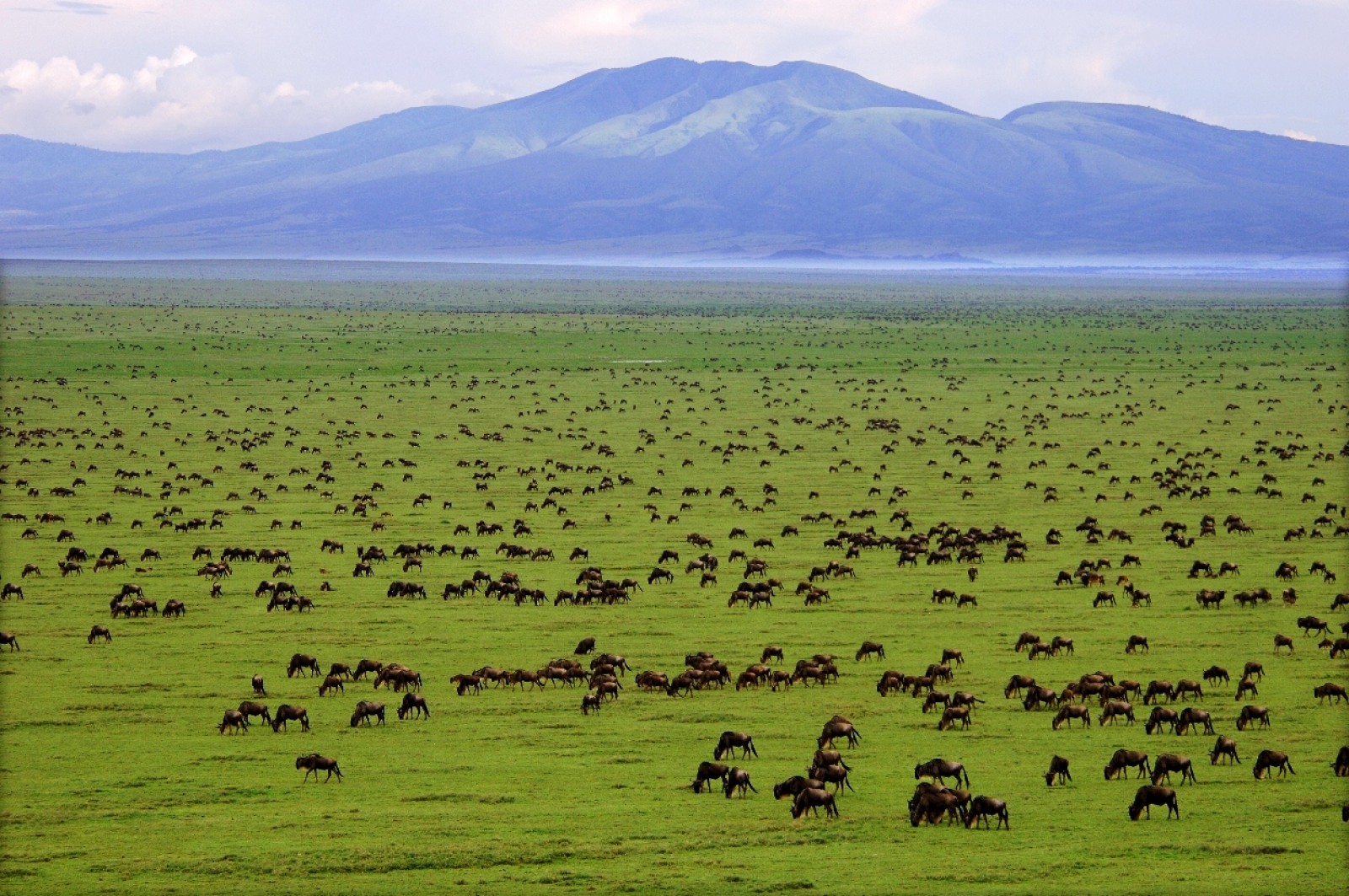Serengeti National Park

About Serengeti
Size: 14,763 sq km (5,700 sq miles).
Location: 335km (208 miles) from Arusha;
415 KM (257 miles) from Moshi Stretching north to Kenya and bordering Lake Victoria to the west
Activities at Serengeti
Walking Safari
Game Drivers
Balloon Safari
Serengeti National Park
One of the biggest National Park known in Africa the park, Considered as mother of all safari parks, the Serengeti is famed for its immense predator population and the annual Wildebeest migration, to permanent water holes of vast herds of herbivores (wildebeest, gazelles and zebras), followed by their predators, is one of the most impressive natural events in the world. Your safari will be the great safari start from ngorongoto then to Serengeti.
Elephants in Serengeti National Park
Serengeti National Park is undoubtedly the best known wildlife sanctuary in the world, unequalled in its natural beauty and scientific value. The name Serengeti conjures up images of millions of wildebeest, zebra, and gazelle meandering about their migration routes with prides of lions, sometimes sleeping, sometimes alert and carefully stalking their prey.
The Serengeti ecosystem is one of the oldest on earth. The essential features of climate, vegetation and fauna have barely changed in the past million years. Early man himself made an appearance in Olduvai Gorge about two million years ago. Some patterns of life, death, adaptation and migration are as old as the hills themselves.
A million wildebeest... each one driven by the same ancient rhythm, fulfilling its instinctivual role in the inescapable cycle of life: a frenzied three-week bout of territorial conquests and mating. Survival of the fittest as 40km (25 mile) long columns of wildebeest plunge through crocodile-infested waters on the annual exodus north; replenishing the species in a brief population explosion that produces more than 8,000 calves daily before the 1,000 km (600 mile) pilgrimage begins again.
Best time to visit Serengeti
Best time to go: January-February for the wildebeest calving;
June-September for general wildlife viewing with a
chance of seeing the wildebeest crossing of the Grumeti River June-July.
High Season: April and May Most of the year - July to March (The Serengeti will be crowded around the Seronera area)
Best Weather: June to October (Rainfall is little to none)
Worst Weather: March and April (Peak of wet season)



